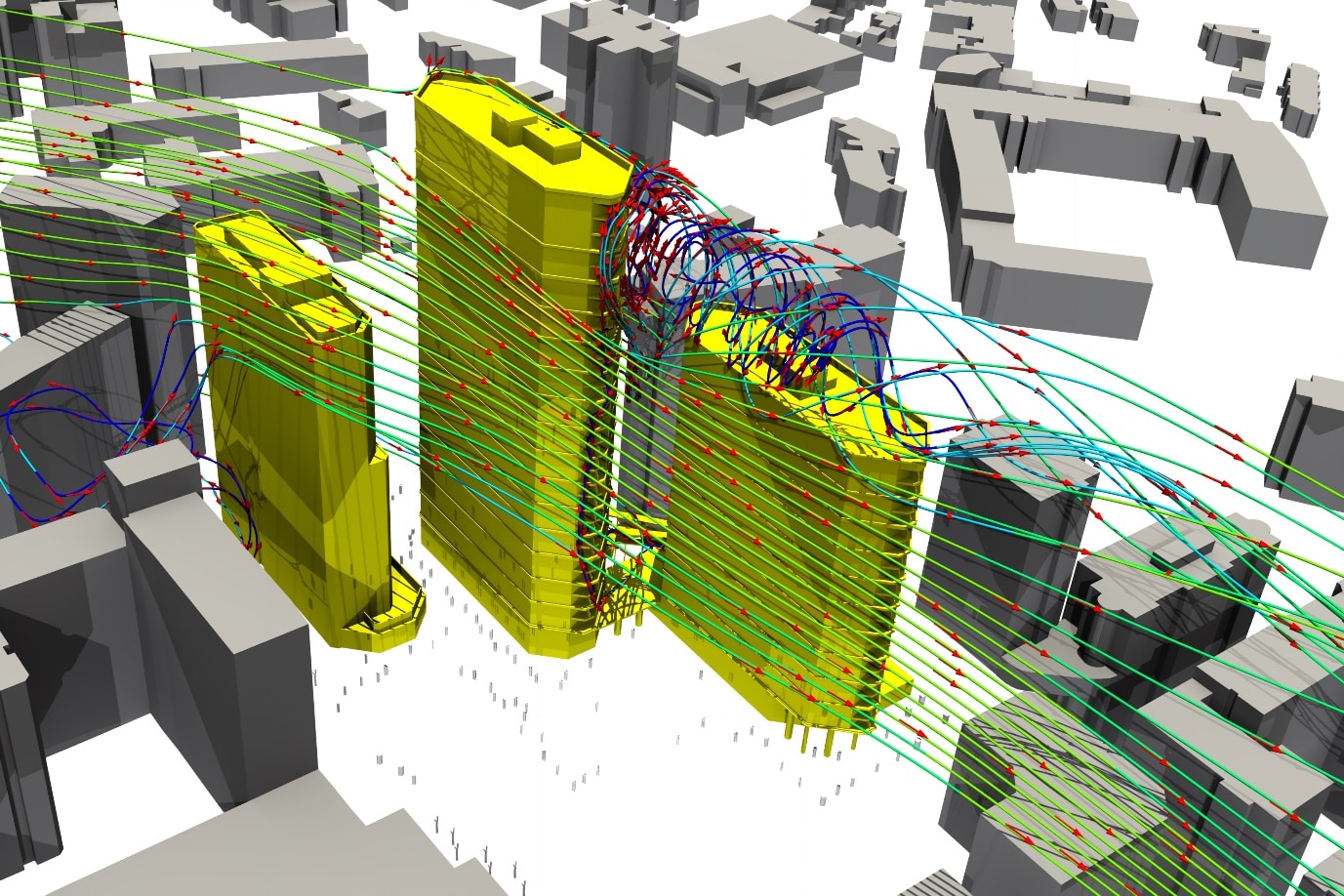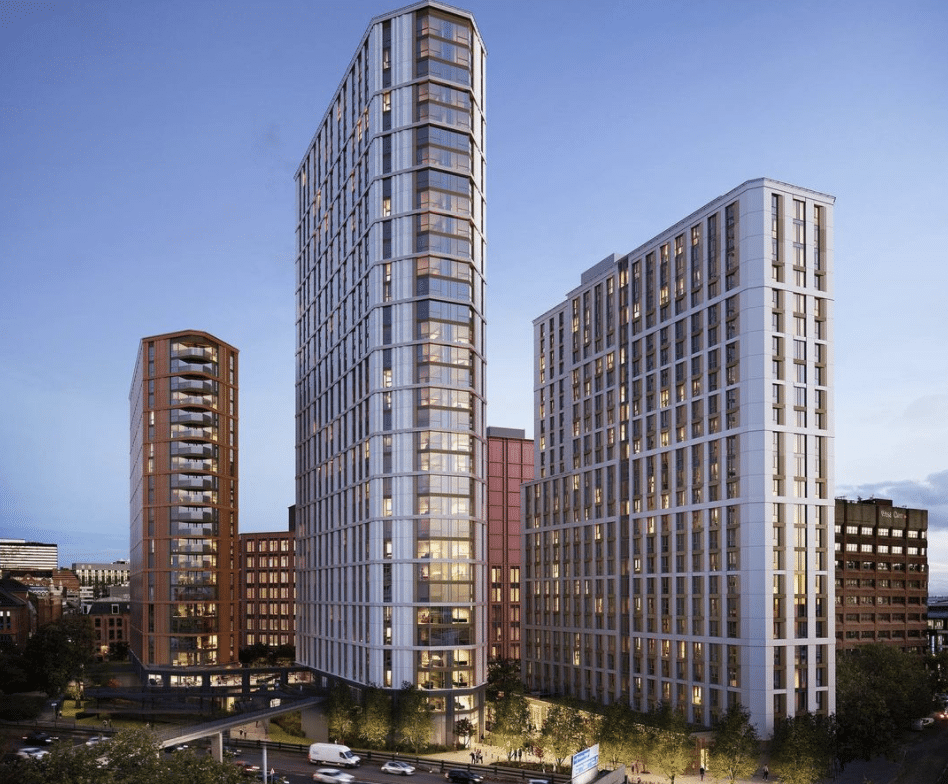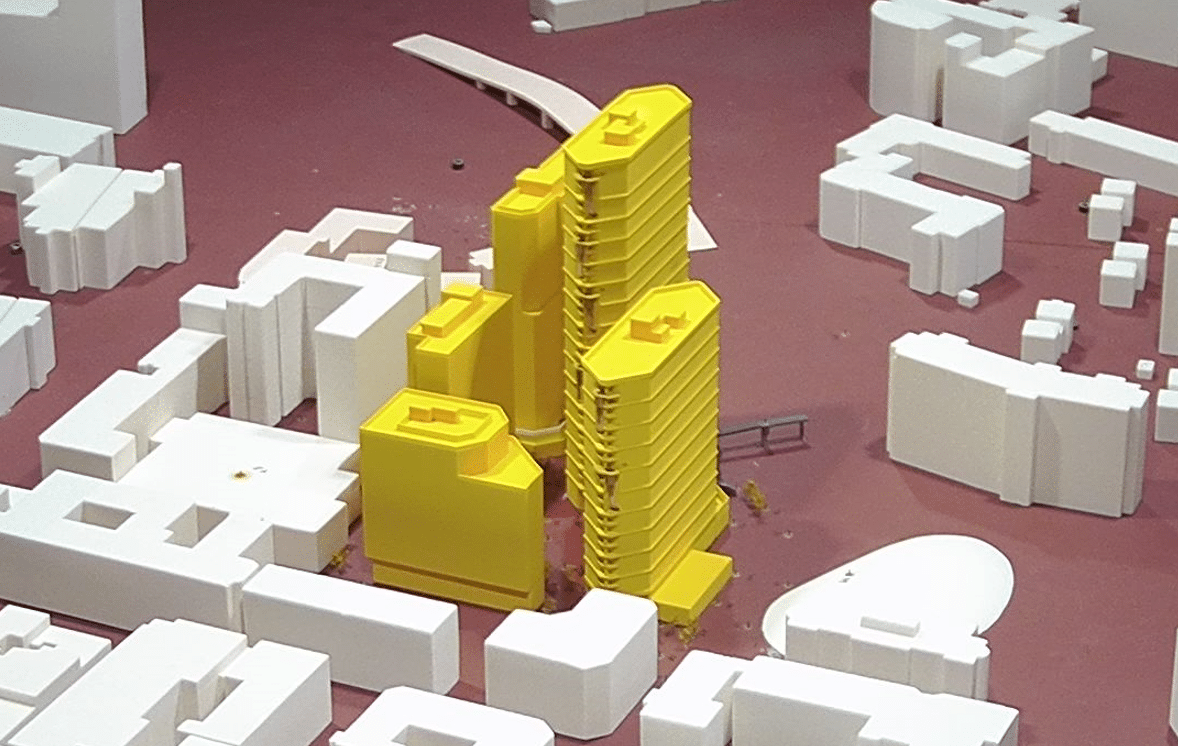Project Feature: Lisbon Street, Leeds
Posted on September 30, 2022
The emphasis has grown on ensuring safe and comfortable wind conditions in Leeds, due to the unfortunate death of an individual in 2011 when strong winds toppled a lorry near Bridgewater Place. While this may not relate directly to wind comfort or safety due to an individual’s direct exposure to wind, it highlights that the built form and urban landscape can cause adverse accelerated winds that are in some circumstances strong enough to move heavy objects. The latest guidelines introduced in July 2021, are the most stringent in the UK and possibly the world, with all buildings in the City over 15m requiring quantitative analysis. This means a study using Computational Fluid Dynamics (CFD) or Wind Tunnel Testing is required.

Figure 1. Render of Wind Flow Streams Around Building Generated by the CFD Analysis
Windtech Consultants are the key consultant providing detailed wind microclimate assessments for the Lisbon Street masterplan in Leeds. This £300 million mixed-used scheme sits on the former international swimming pool site and gained full planning in 2021. The project is developed by Marrico Asset Management and Helios Real Estate, the design is by DLA Architecture and Curtins are onboard as the Structural Consultant. There are four high-rise buildings which will include 600 build-to-rent flats in 33 and 22-storey towers, student accommodation in a 24-story tower and further space for hotels and offices.
Windtech has assisted during the design and planning application phase of the project. Given its height and scale, the Leeds Guidelines require wind engineering in the form of both CFD and wind tunnel testing for Pedestrian Wind Microclimate comfort and safety. Windtech Consultants, with world-leading expertise in both of these fields has undertaken both CFD and Wind tunnel testing on the project.

Figure 2. Artistic Render of Lisbon Street, Leeds (image courtesy of DLA Architecture)
Aaron Lefcovitch who is a Director with Windtech Consultants indicated that “we have tested the buildings in line with the City requirements and identified the areas where winds exceed recommended comfort and safety levels. This is the first step of the wind engineering process. Then we use what we have learned from more than 3,000 past projects to provide strategies that we feel will bring the wind conditions down to acceptable levels. It is not always required, albeit recommended to verify quantitatively the impact that treatment strategies have on wind comfort and safety, and we can do this by conducting further testing with treatments in place. Treatment testing can be an iterative process, however Windtech has the unique ability to home in on the most effective mitigation strategy very quickly without dragging out the project timeline unnecessarily. Treatments generally included strategic planting of trees and shrubs and strategic placement of screens, canopies and balustrades at various locations around the development.”

Figure 3. Image of Development Being Tested in the Wind Tunnel
Through this project and many others in the city of Leeds, Windtech now has a great deal of experience working with the Leeds local authority as well as providing a comfortable and safe environment for pedestrians within and around large developments in the City of Leeds.
We would like to congratulate Lisbon Street Developments, a joint venture partnership between Marrico Asset Management and Helios Real Estate, DLA Architecture, Re-form Landscape Architecture, Quod, CSD, Curtins, RBA, Turley, Brooks Ecological, Stroma Building Control, Jensen Hughes, Hydrock, Apex Acoustics and AA Projects for the rollout of this iconic development in Leeds.
If you are working on any projects that could benefit from the capabilities presented in this article, please reach out to our regional office via our Contact Us page.
To get regular updates on news and events, please follow us on our LinkedIn page.
Return to Main News Page

